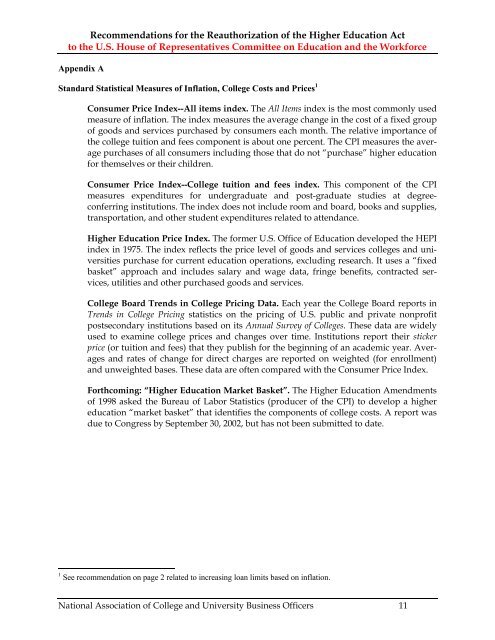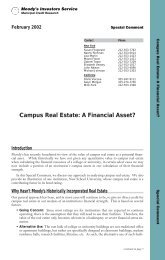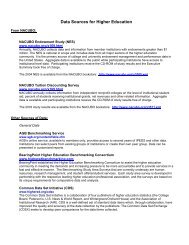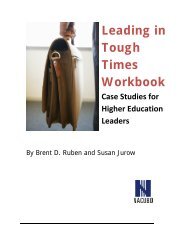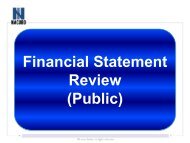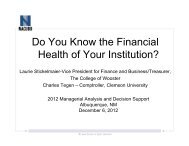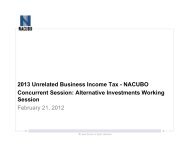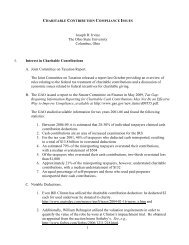March 5, 2003 The Honorable John A. Boehner U.S. ... - NACUBO
March 5, 2003 The Honorable John A. Boehner U.S. ... - NACUBO
March 5, 2003 The Honorable John A. Boehner U.S. ... - NACUBO
You also want an ePaper? Increase the reach of your titles
YUMPU automatically turns print PDFs into web optimized ePapers that Google loves.
Recommendations for the Reauthorization of the Higher Education Actto the U.S. House of Representatives Committee on Education and the WorkforceAppendix AStandard Statistical Measures of Inflation, College Costs and Prices 1Consumer Price Index--All items index. <strong>The</strong> All Items index is the most commonly usedmeasure of inflation. <strong>The</strong> index measures the average change in the cost of a fixed groupof goods and services purchased by consumers each month. <strong>The</strong> relative importance ofthe college tuition and fees component is about one percent. <strong>The</strong> CPI measures the averagepurchases of all consumers including those that do not “purchase” higher educationfor themselves or their children.Consumer Price Index--College tuition and fees index. This component of the CPImeasures expenditures for undergraduate and post-graduate studies at degreeconferringinstitutions. <strong>The</strong> index does not include room and board, books and supplies,transportation, and other student expenditures related to attendance.Higher Education Price Index. <strong>The</strong> former U.S. Office of Education developed the HEPIindex in 1975. <strong>The</strong> index reflects the price level of goods and services colleges and universitiespurchase for current education operations, excluding research. It uses a “fixedbasket” approach and includes salary and wage data, fringe benefits, contracted services,utilities and other purchased goods and services.College Board Trends in College Pricing Data. Each year the College Board reports inTrends in College Pricing statistics on the pricing of U.S. public and private nonprofitpostsecondary institutions based on its Annual Survey of Colleges. <strong>The</strong>se data are widelyused to examine college prices and changes over time. Institutions report their stickerprice (or tuition and fees) that they publish for the beginning of an academic year. Averagesand rates of change for direct charges are reported on weighted (for enrollment)and unweighted bases. <strong>The</strong>se data are often compared with the Consumer Price Index.Forthcoming: “Higher Education Market Basket”. <strong>The</strong> Higher Education Amendmentsof 1998 asked the Bureau of Labor Statistics (producer of the CPI) to develop a highereducation “market basket” that identifies the components of college costs. A report wasdue to Congress by September 30, 2002, but has not been submitted to date.1 See recommendation on page 2 related to increasing loan limits based on inflation.National Association of College and University Business Officers 11


